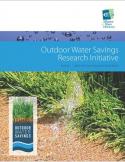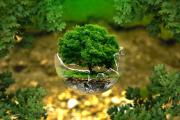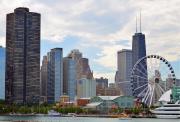Research Review on Outdoor Water Saving Programs

A report detailing the research compiled to date and identifying where the gaps in the research occur. The report is the first step in AWE’s project to help clarify what programs, practices, and irrigation technologies save the most water. The report was prepared for AWE by the project team of Peter Mayer, Paul Lander, and Diana Glenn. Funding for this phase one report was provided by the California Urban Water Agencies.
Description of the Project
AWE plans to implement a comprehensive Outdoor Water Savings Research Program to develop actionable information and data on the savings potential and actual water savings from a variety of outdoor conservation measures. The goal of this research program is to provide relevant, statistically validated, and peer reviewed information on water savings and costs from different outdoor measures and programs, regional differences, and evaluation methods, and to provide key inputs for the AWE Conservation Tracking Tool and other demand forecasting models.
The Research Report summarizes the work completed in Phase 1 of the AWE Outdoor Water Savings Research Initiative. Phase 1 is a review, analysis, and synthesis of published research on outdoor water use and water savings. In particular, studies that documented water savings were sought. The research in Phase 1 was conducted specifically for the purpose of informing the direction of the AWE Outdoor Water Savings Research Initiative so that the limited research budget can be focused on the area(s) of greatest need.
Research Report General Findings
Outdoor water savings are achievable and can be significant. Numerous recent studies documented outdoor water savings from specific measures such as conservation oriented rates, xeriscape, or soil moisture sensors that reduced outdoor water use by 15 – 65% or more. The research shows that successful approaches to reducing outdoor water use are available and are in fact being implemented across the U.S.
Quantifying water savings from outdoor programs and measures is challenging. Remarkably few studies quantify water savings from measures such as xeriscape or landscape contractor training and certification. Many studies that originally sought to measure water savings instead report “hypothetical” or modeled savings results because of data collection problems or climate variability.
Reporting of outdoor water savings in research varies and there is a lack of geographic and climate variability in the research. Many studies report savings as a percentage, but the basis of the percentage is not consistent across all studies. Some studies reported savings in gallons per square foot of landscape impacted. Much of the urban landscape outdoor water savings research to date of real significance has been conducted in Florida, California, and Nevada. Except for Florida, outdoor water savings research east of the Mississippi is hard to come by.
Cost savings are rarely documented. Water savings are documented in some good studies, but cost savings – from either the customer perspective or the utility perspective – are documented in very few of the studies. If cost savings are documented, it is almost always based on water reductions only. Very few studies consider the time and maintenance costs associated with a landscape and how these may be impacted by the efficiency program.
Standardized approaches and methods for measuring and evaluating outdoor water efficiency programs are needed. Work has begun on establishing conservation metrics, and robust methods for measuring changes in water use are available. Developing standardized approaches and performance indicators, similar to what has been accomplished for water loss control, could be highly beneficial for water utilities in measuring their progress.
Research Needs
The following were identified as the areas of greatest need for additional research on outdoor water savings and costs:
- Impact of native, water-wise, and xeric landscapes vs. turf on water use and cost.
- Impact of water rates, rate structures, and billing information on demand.
- Impact of various drought restrictions on demand. The best/only research on this topic is now 10 years old.
- Water requirements and drought tolerance of landscape turfs and plants under different climate and drought conditions. Water requirement should be based on acceptable appearance rather than maximum growth.
- Impact of landscape contractor training, education, and certification.
- The human element of landscape water management – how people manage and interact with the entire irrigation system and the installed landscape.
- Impact of improving system efficiency through audits, tune ups, sprinkler-head retrofits, and other measures.
- Reasons and rationale for customer landscape choices.
- Cost-effectiveness and cost savings of various outdoor water saving programs.
- Impact of regional variability (climate, soils, demographics, etc.) on outdoor water demand and savings, with a standard measure for comparison across regions.
- Standard methods for monitoring and verifying water savings.
- Long-term reliability and projected lifetime of outdoor water savings.





